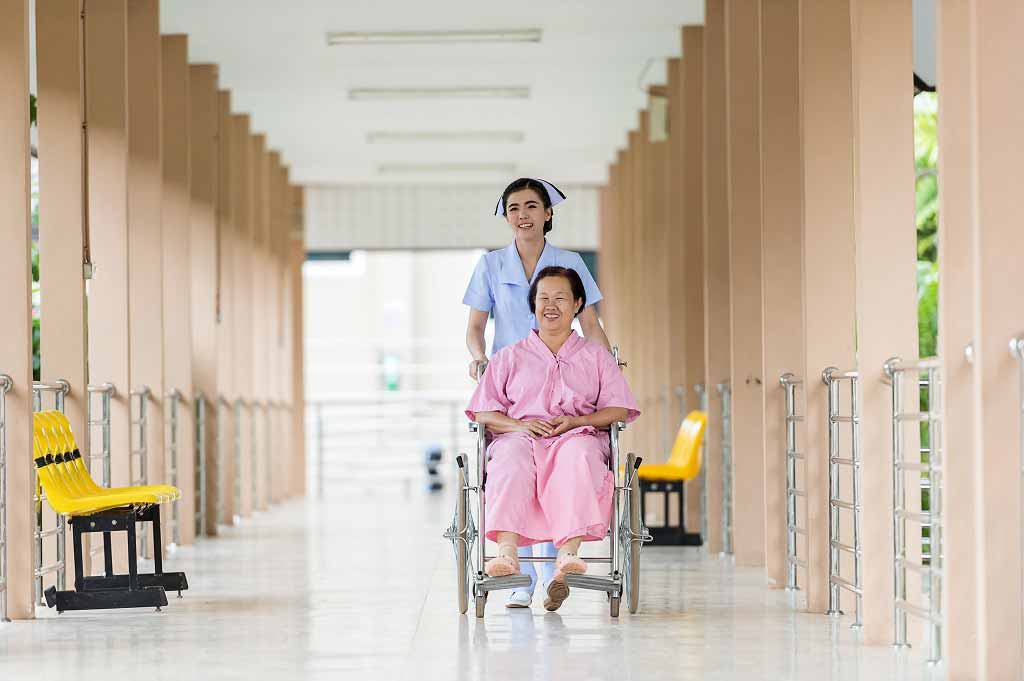Can aerobic exercise slow down ageing?
Lifestyle and exercise

'Running is better than weight training at reversing signs of ageing' The Independent reports
"Running is better than weight training at reversing signs of ageing," reports The Independent.
Researchers from Germany assessed the impact of 3 types of exercise – high intensity interval training, endurance walking or running, and weight training – on signs of ageing in human blood cells.
They found that, after 6 months of exercising for 45 minutes 3 times a week, all types of exercise improved fitness, but only interval training and running or walking had an effect on signs of cellular ageing.
The researchers measured the length of telomeres, which are protective caps at the end of chromosomes (coils of DNA found in all human cells).
Telomeres help prevent damage to the chromosomes that encode the cells' genetic information.
As we age, telomeres shorten, meaning chromosomes are more likely to get damaged. This is one of the ways in which cells show signs of age.
Previous studies have linked longer blood cell telomeres to healthier blood vessels and hearts.
The researchers found telomeres shortened slightly among people who did no exercise or weight training, but lengthened among those who ran or walked, or did interval training.
But these findings were only based on 124 people. All types of exercise have benefits for health, including weight training.
This study suggests weight training may be best seen as a useful addition to aerobic exercise, such as running or fast walking, rather than a replacement for it.
This reflects NHS advice to do both types of exercise.
Read more about the recommended exercise guidelines for adults.
Where did the story come from?
The study was carried out by researchers at the Universität des Saarlandes, Universitätklinikum Leipzig and Hermann-Neuberger-Sportschule in Germany, with funding from the Corona Foundation, Deutsche Forschungsgemeinschaft, Saarland University, Saarland Ministry of the Interior, and Leipzig University.
It was published in the peer-reviewed European Heart Journal.
The Independent gave a good overview of the study, but didn't mention the high dropout rate. More than half the people taking part in the study dropped out.
What kind of research was this?
This was a randomised controlled trial (RCT). These are usually the best way to test whether an intervention (such as a particular type of exercise) works.
This study only included results from the people who completed at least 70% of the training sessions, rather than all those originally assigned to the exercise.
This per-protocol analysis is less usual than an intention-to-treat analysis, as intention-to-treat gives more of a "real world" picture of the results of asking someone to take part in an exercise programme.
What did the research involve?
For the main study, researchers recruited 266 non-smoking adults aged 30 to 60 who were in good health but didn't exercise on a regular basis.
Everyone did a cardiovascular fitness test that measured maximum oxygen uptake while exercising, and gave blood for telomere testing and measurement.
The participants were assigned to 1 of 4 groups:
- the control group were asked to maintain their lifestyle and diet for the next 6 months
- the endurance group was asked to run or walk briskly at a level that used 60% of their heart rate reserve (according to a heart monitor) for 45 minutes 3 times a week
- the interval training group was asked to exercise for 45 minutes 3 times a week; each session involved a 10-minute warm-up of fast walking and then running to 60 to 70% capacity, 4 bouts of high-intensity running at 80 to 90% capacity for 4 minutes each, then slow running at 65 to 70% capacity for 3 minutes and 10 minutes cool-down running – this type of exercise regime is often referred to as high intensity interval training (HIIT)
- the weight training group was asked to exercise for 45 minutes 3 times a week, switching between 8 weight machine-based exercises, such as chest pressing exercises
The groups had to attend at least 1 supervised exercise session a week. At the end of the study, people retook the fitness test and gave blood samples for telomere testing.
Only people from the exercise groups who completed at least 70% of the exercise sessions (55 sessions) were included in the results.
As well as measuring telomere length, the researchers measured the activity of a protein called telomerase, which protects telomeres.
What were the basic results?
Of the 266 people who started the study, 142 dropped out because of:
- not taking part in exercise (43 people)
- personal reasons (28 people)
- orthopaedic problems (29 people)
- injury (1 person)
- other reasons (18 people)
- missing data or implausible test results (23 people)
Based on the 124 people left, researchers found:
- all 3 training groups had similar improvements in their physical fitness compared with the control group
- all 3 training groups increased their maximum running speed compared with the control group
- the endurance group and the interval training group both had small increases in the length of the telomeres on the chromosome of their white blood cells, by about 3.3% to 3.5%
- the control group and the weight training group had either no change or a small decrease in telomere length, depending on the method of measurement
- measurements of telomerase activity increased twofold in the endurance group and the interval training group, but didn't change in the control group or the weight training group
How did the researchers interpret the results?
The researchers said the study showed that "completing a training programme of moderate or intensive endurance exercise led to potent anti-ageing effects in circulating blood cells", which they said was "consistent with beneficial effects on cardiovascular health in the long term".
They say the study results "support the European Society of Cardiology's current guideline recommendations that resistance exercise [weight training] should be complementary [in addition] to endurance training, rather than a substitute".
Conclusion
This study adds to our understanding of how exercise can help keep people fit and healthy as they age.
In addition to the benefits of exercise already known – such as improved heart and lung health, lower cholesterol, better mental health, and stronger bones and muscles – exercise may also protect us from ageing at a cellular level.
But there are limitations to what the study can tell us. The high dropout rate indicates that adopting an exercise regime that required 45 minutes of training, 3 times a week, isn't always easy.
Because the results are based on only the people who completed at least 70% of the exercise sessions, we don't know the effect on telomere length for people who did less exercise over the 6-month period.
We also don't know the long-term physical effects of the small changes in telomere length observed in the study.
While there is evidence from other studies that longer telomere length in white blood cells is beneficial for the cardiovascular system, we can't tell that from this study.
Exercise clearly has many benefits and, even if the telomere length changes don't translate directly into physical benefits, keeping active is a great way to stay healthy as we get older.
The NHS recommends that most adults should do:
- at least 150 minutes of moderate aerobic activity, such as cycling or brisk walking every week, and
- strength exercises on 2 or more days a week that work all the major muscles (legs, hips, back, abdomen, chest, shoulders and arms)
Or:
- 75 minutes of vigorous aerobic activity, such as running or a game of singles tennis every week, and
- strength exercises on 2 or more days a week that work all the major muscles (legs, hips, back, abdomen, chest, shoulders and arms)
Or:
- a mix of moderate and vigorous aerobic activity every week, such as 2 30-minute runs plus 30 minutes of brisk walking, which equates to 150 minutes of moderate aerobic activity, and
- strength exercises on 2 or more days a week that work all the major muscles (legs, hips, back, abdomen, chest, shoulders and arms)
Even if you have been inactive for years, it's never too late to increase your activity levels whatever your age or overall health.
Find out how to get active your way






 Subscribe
Subscribe Ask the doctor
Ask the doctor Rate this article
Rate this article Find products
Find products






